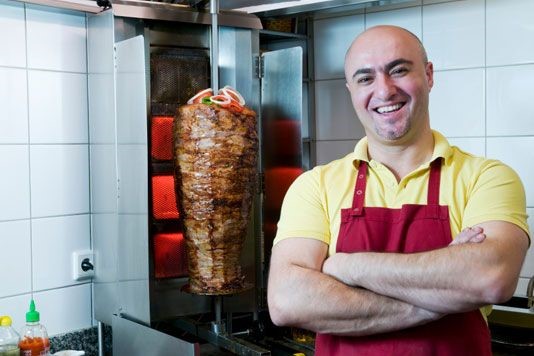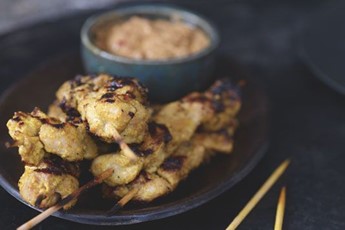From kebabs to Cumberland sausages: cooking meat on spits and skewers

Nick Baines looks at the wider history of cooking meat on poles.
The kebab has cemented itself into the British high street and today you’re as likely to find a kebab house on your street corner as you are a chip shop, newsagent or local boozer. But despite its omnipresence, the kebab is a guilty pleasure.
It provides sustenance to hungry drinkers, a beer sponge readily available when the pubs close. It has become closely affiliated with the inebriated because at 11.30 at night, it’s often the only food option available. But beyond the doner, there’s a whole myriad of skewer specialties varying from the backyard barbecue skewer to a juicy rotisserie chicken.
A world of skewers
The implementation of skewers obviously followed shortly after man’s greatest discovery, cooking with fire. Every nation in the world has mastered this art in some form or another. In Japan, small skewers of chicken meat and offal are grilled over coals and known as yakitori.
 Chicken satay, a dish I am sure readers are familiar with, originates from Indonesia and is ubiquitous across south east Asia. In the dusty streets of Vietnam you’re likely to see meat skewered with sticks of lemon grass, which impart their own flavour throughout the cooking process.
Chicken satay, a dish I am sure readers are familiar with, originates from Indonesia and is ubiquitous across south east Asia. In the dusty streets of Vietnam you’re likely to see meat skewered with sticks of lemon grass, which impart their own flavour throughout the cooking process.
Turkey is where our trusted friend the doner kebab originates. Lamb is mixed with herbs and spices before being packed onto a spit and roasted over fire. Cooking the doner on a vertical axis is not only an economical use of space, but the rendered juices run down the outside of the doner, basting the meat during the descent.
Spits and skewers in Britain
Skewers and spits have long been used in Britain too. In Colin Spencer’s British Food he describes a manor kitchen in Anglo-Saxon times. “As with the peasant household, the implements at a manor kitchen would have been a large cauldron and tripod, but they would have a much used spit turned by hand and able to hold the occasional large carcass or a string of smaller ones. There were also smaller spits for small birds.” These smaller spits would be used to cook all manner of scraps and offcuts.
Even now, the coils of a Cumberland sausage are often held in place by two skewers, which remain in place whilst grilled or barbecued. Perhaps our finest use of skewers is their fundamental use in hog roasts. Painted with honey and basted in cider it’s one of life’s greatest gifts and the virtues of this form of cooking speak for themselves.
Over the camp fire
From lancing a banger on the end of a metal tent peg and dangling it in the flames, to roasting marshmallows on the fringe of a garden bonfire, using a stick to cook your food comes natural to us. “It’s instinctive. See a fire. Find a stick. Cook something on that. I remember field mushrooms, small fresh fish and thick slices of pineapple,” says Glynn Christian, author of Real Flavours, voted world’s best guide to deli and specialty foods. “But best ever is proper toast, sliced thickly, first well warmed through a little distance from the fire and then browned closer. These days I’d scrape it with garlic, before and after, butter or olive oil.”
Do you appreciate a decent doner or are you all about the hog roast? What are your favourite or most memorable skewer cooked foods?
You might also enjoy
Comments
Be the first to comment
Do you want to comment on this article? You need to be signed in for this feature